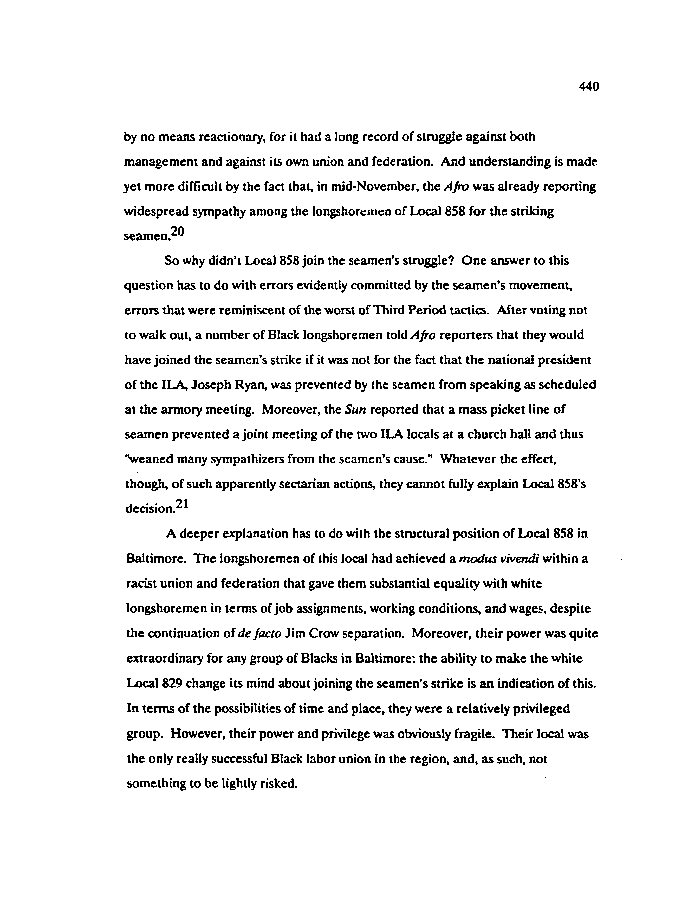|
440
by no means reactionary, for it had a long record of struggle against both
management and against its own union and federation. And understanding is made
yet more difficult by the fact that, in mid-November, the Afro was already reporting
widespread sympathy among the longshoremen of Local 858 for the striking
seamen.20
So why didn't Local 858 join the seamen's struggle? One answer to this
question has to do with errors evidently committed by the seamen's movement,
errors that were reminiscent of the worst of Third Period tactics. After voting not
to walk out, a number of Black longshoremen told Afro reporters that they would
have joined the seamen's strike if it was not for the fact that the national president
of the ILA, Joseph Ryan, was prevented by the seamen from speaking as scheduled
at the armory meeting. Moreover, the Sun reported that a mass picket line of
seamen prevented a joint meeting of the two ILA locals at a church hall and thus
"weaned many sympathizers from the seamen's cause." Whatever the effect,
though, of such apparently sectarian actions, they cannot fully explain Local 858's
decision.^*
A deeper explanation has to do with the structural position of Local 858 in
Baltimore. The longshoremen of this local had achieved a modus vivendi within a
racist union and federation that gave them substantial equality with white
longshoremen in terms of job assignments, working conditions, and wages, despite
the continuation of de facto Jim Crow separation. Moreover, their power was quite
extraordinary for any group of Blacks in Baltimore: the ability to make the white
Local 829 change its mind about joining the seamen's strike is an indication of this.
In terms of the possibilities of time and place, they were a relatively privileged
group. However, their power and privilege was obviously fragile. Their local was
the only really successful Black labor union in the region, and, as such, not
something to be lightly risked.
|

